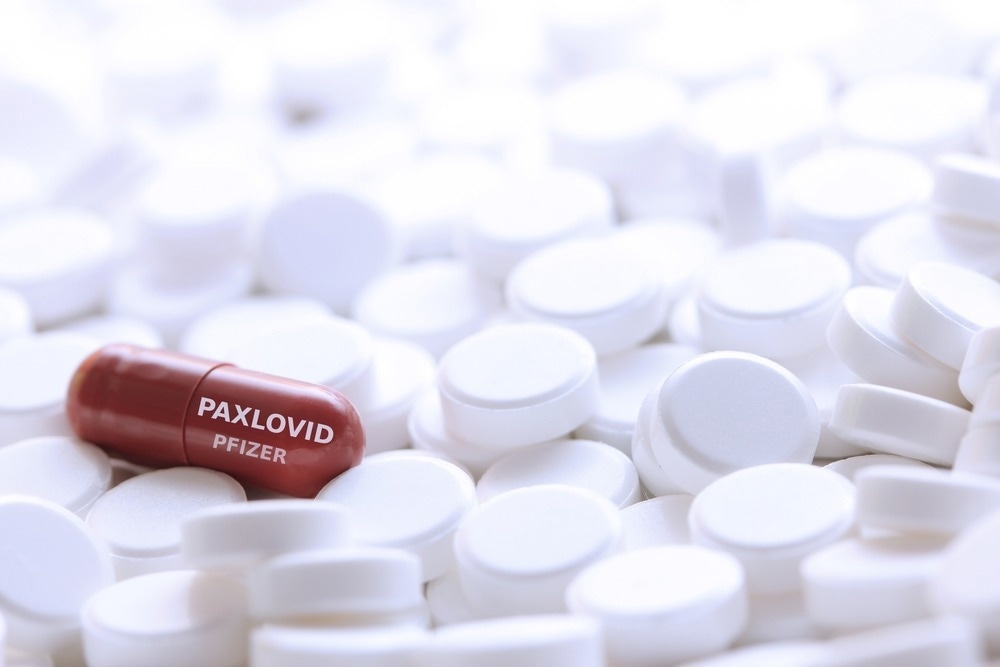In a recent retrospective and observational cohort study published in The Lancet Infectious Diseases, researchers examine non-hospitalized adult patients with coronavirus disease 2019 (COVID-19) treated with nirmatrelvir-ritonavir between March 26, 2022, and August 25, 2022.

Study: Real-world use of nirmatrelvir–ritonavir in outpatients with COVID-19 during the era of omicron variants including BA.4 and BA.5 in Colorado, USA: a retrospective cohort study. Image Credit: Tobias Arhelger / Shutterstock.com
These patients contracted the infection from various severe acute respiratory syndrome coronavirus 2 (SARS-CoV-2) Omicron sub-variants, including BA.2, BA.4/ BA.5, and BA2.12.1, and were subsequently treated with nirmatrelvir-ritonavir. The effect of this treatment on hospitalization, mortality, and emergency department (ED) visits during a 28-day follow-up period was determined.
Note that in-hospital mortality was considered to be the highest level of COVID-19 severity. Whereas lower disease severity was identified in patients who did not require supplemental oxygen, the characterization for disease severity increased according to standard or high-flow nasal cannula oxygen, and non-invasive and invasive mechanical ventilation requirements.
Background
Nirmatrelvir, which is sold under the trade name PaxlovidTM, is a protease inhibitor oral drug with activity against Mpro, which is the main protease essential for SARS-CoV-2 replication. Ritonavir-boosted nirmatrelvir therapy reduced the risk of progression to severe COVID-19 by 89% as compared to those who received a placebo in unvaccinated adults in the EPIC-HR trial. Notably, this trial was conducted during the COVID-19 pandemic phases when pre-Delta and Delta variants were predominant.
Based on the trial results, the United States Food and Drug Administration (FDA) granted emergency use authorization (EUA) for nirmatrelvir-ritonavir in December 2021. Since then, mild-to-moderately ill adult and pediatric COVID-19 patients at a greater risk of developing severe COVID-19 have received Paxlovid therapy. However, its effectiveness in non-hospitalized COVID-19 patients during the Omicron-dominant phase of the pandemic remains unknown.
About the study
In the present study, researchers obtained data from the University of Colorado Health system electronic health records (EHRs) using Health Data Compass. EHR data was merged with statewide vaccination status and mortality data retrieved from Colorado's comprehensive immunization information system and vital records.
The study follow-up time was 28 days. Initially, patients treated with nirmatrelvir-ritonavir accounted for less than 10% of the patients in Colorado; however, this rose to 25% after March 26, 2022.
For primary study analysis, the researchers used a COVID-19-positive test date as the index date before the documented nirmatrelvir-ritonavir therapy initiation date. The first ED visit that occurred at least one day after the nirmatrelvir-ritonavir initiation date was also selected for analysis, provided that the treatment began at the initial ED visit.
Nirmatrelvir-ritonavir treatment comprised 300 mg oral nirmatrelvir, which was lowered to 150 mg for patients with moderate renal issues, and 100 mg ritonavir, two times a day, for five days.
A propensity matching ratio of 1·31:1 was devised for nirmatrelvir-ritonavir treated to untreated patients, with a total matched cohort size of 16,529, to optimize precision and minimize bias. The propensity model accounted for the patient's age, gender, race/ethnicity, insured or not, immunity/vaccination status, infecting Omicron subvariant (BA.4 or BA.5), and comorbidities, such as obesity, all of which constituted the study's variable covariates.
The primary outcome assessed in this study was all-cause hospitalization within 28 days following SARS-CoV-2 infection. Firth's logistic regression was also used to evaluate the correlation between drug treatment and ensuing ED visits and mortality within 28 days as secondary outcomes.
Study findings
Of all patients screened during this study, 21,493 patients met the study inclusion criteria, 9,881 of whom received nirmatrelvir-ritonavir treatment and 11,612 remained untreated.
During the phase when SARS-CoV-2 Omicron subvariants BA.4/BA.5 were predominant in Colorado, nirmatrelvir-ritonavir treatment was associated with a reduced incidence of both 28-day all-cause and COVID-19-related hospitalization as compared to no treatment.
All-cause hospitalization occurred in 61 of 7,168 patients as compared to 135 of 9,361 patients, with an adjusted odds ratio (aOR) of 0.45. Nirmatrelvir-ritonavir use in outpatients also significantly reduced 28-day all-cause mortality with an aOR of 0.15.
Considering ED visits as a proxy for clinically relevant relapse, nirmatrelvir-ritonavir treatment was also found to reduce ED visit rates. Accordingly, 283 of 7,168 patients in the treatment group and 437 of 9,361 patients in the untreated group made an ED visit. Indeed, nirmatrelvir-ritonavir therapy prevented symptoms relapse and reduced the severity of symptoms that were not resolved.
Conclusions
The study findings support nirmatrelvir-ritonavir therapy as a first-line treatment for adults with acute COVID-19, as the treatment neutralized SARS-CoV-2 Omicron subvariants in vitro and effectively cured outpatients at a high risk of developing severe COVID-19 and inpatients with less severe COVID-19.
Furthermore, nirmatrelvir-ritonavir significantly reduced hospitalization and all-cause mortality within 28 days of follow-up during an Omicron predominant era when BA.4/BA.5 were in circulation. Nirmatrelvir-ritonavir therapy was also equally effective among younger and older patients, thus supporting the generalizability of the study results.
Journal reference:
- Aggarwal, N. R., Molina, K. C., Beaty, L. E., et al. (2023). Real-world use of nirmatrelvir–ritonavir in outpatients with COVID-19 during the era of omicron variants including BA.4 and BA.5 in Colorado, USA: a retrospective cohort study. The Lancet Infectious Diseases. doi:10.1016/S1473-3099(23)00011-7